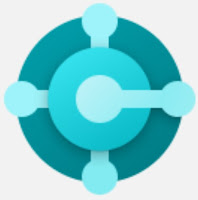 Hi Readers,
Hi Readers,In this article, we will discuss how to do Data Upgrade From 15.0 (Initial Release) To 15.2 (Cumulative Update 02 for Business Central).
There is no official documentation for data upgrade between 2019 Wave 2 cumulative Update.
I hope to receive Microsoft Blessing on what I am suggesting below as steps for data upgrade.
#MSDYN365BC #2019Wave2
To Start with Why this is Needed?
As we discussed earlier in this article about upgrade compatibility Matrix to Business Central 15.
To Upgrade to Business Central 2019 Wave 2, there are specific versions of Business Central 14 that you can upgrade to Business Central Spring Release (14.x).
In archerpoint we always try to Upgrade our customers to the latest and greatest version of the product available. But due to addon/ISV Limitations, we had to upgrade most of our customers to Business Central Spring Release (14.x).
At the same time, our customers in Business Central 14.x are in different cumulative Update. So for there next Upgrade we either will have to Upgrade code and data to latest cumulative Update of Spring Release (14.x) or have a different plan.
What is the different Plan?
Our different plan is, to upgrade to compatibility version of 15 and then from there upgrade to the latest and greatest version of 15.x.
Below are the steps (Still Need Microsoft Blessings)
1. Take a Full backup of the database.
2. Import Powershell Module.
Import-Module 'C:\Program Files\Microsoft Dynamics 365 Business Central\150\Service\NavAdminTool.ps1'
3. Import Partner License.
Import-NAVServerLicense -LicenseFile <<LicensePath>> -ServerInstance <<BC15Service>>
4. Restart NAV Service.
Restart-NAVServerInstance -ServerInstance <<BC15Service>>
5. UnInstall All App Installed on Service
Get-NAVAppInfo -ServerInstance <<BC15Service>> | % { Uninstall-NAVApp -ServerInstance <<BC15Service>> -Name $_.Name -Version $_.Version -Force}
6. UnPublish All Symbol on Service
Get-NAVAppInfo -ServerInstance <<BC15Service>> -SymbolsOnly | % { Unpublish-NAVApp -ServerInstance <<BC15Service>> -Name $_.Name -Version $_.Version}
7. Stop NAV Service
Stop-NAVServerInstance -ServerInstance <<BC15Service>>
Uninstall Business Central 15 older version and install the new version.
Change the Compatibility Level of the database to max Version. Close and Start Powershell again before proceeding.
8. Change the Compatibility level of the database.
Open SQL Server and change the Compatibility of the database as shown below.
9. Import BC15 Powershell Module
Import-Module 'C:\Program Files\Microsoft Dynamics 365 Business Central\150\Service\NavAdminTool.ps1'
10. Invoke Application Database Conversion
Invoke-NAVApplicationDatabaseConversion -DatabaseName <<DBName>> -DatabaseServer <<ServerName>>
11. Set Database Name
Set-NAVServerConfiguration -ServerInstance <<BC15Service>> -KeyName DatabaseName -KeyValue <<DBName>>
12. Disable Task Scheduler
Set-NavServerConfiguration -ServerInstance <<BC15Service>> -KeyName "EnableTaskScheduler" -KeyValue false
13. Restart Service
Restart-NAVServerInstance -ServerInstance <<BC15Service>>
13. Publish System App Symbols
Publish-NAVApp -ServerInstance <<BC15Service>> -Path "C:\Program Files (x86)\Microsoft Dynamics 365 Business Central\150\AL Development Environment\System.app" -PackageType SymbolsOnly
14. Publish Microsoft System App.
#Change Path as the Path of System Application.
Publish-NAVApp -ServerInstance <<BC15Service>> -Path "D:\Wave 2 DVD 15.2\Applications\System Application\Source\Microsoft_System Application.app"
15. Publish Microsoft Base App.
#Change Path as the Path of Base Application.
Publish-NAVApp -ServerInstance <<BC15Service>> -Path "D:\Wave 2 DVD 15.2\Applications\BaseApp\Source\Microsoft_Base Application.app"
16. Sync NavTenant
Sync-NAVTenant -ServerInstance <<BC15Service>> -Mode Sync
17. Get Version for System and Base Application
Get-NAVAppInfo -ServerInstance <<BC15Service>> | format-table Name,version
18. Sync System Application
Sync-NAVApp -ServerInstance <<BC15Service>> -Name "System Application" -Version <<NewBaseID>>
19. Sync Base Application
Sync-NAVApp -ServerInstance <<BC15Service>> -Name "Base Application" -Version <<NewBaseID>>
20. System Application NAVApp Data Upgrade
Start-NAVAppDataUpgrade -ServerInstance <<BC15Service>> -Name "System Application" -Version <<NewBaseID>>
21. Base Application NAVApp Data Upgrade
Start-NAVAppDataUpgrade -ServerInstance <<BC15Service>> -Name "Base Application" -Version <<NewBaseID>>
22. Sync other NAV Applications installed.
23. Data Upgrade NAV Application
24. Publish Sync and Install New Application
#Change Path as the Path of System Application.
Publish-NAVApp -ServerInstance <<BC15Service>> -Path "D:\Wave 2 DVD 15.2\Applications\MX_DIOT\Source\MX_DIOT.app"
Sync-NAVApp -ServerInstance <<BC15Service>> -Name "DIOT - Localization for Mexico" -
Version <<NewBaseID>>
Install-NAVApp -ServerInstance <<BC15Service>> -Name "DIOT - Localization for Mexico" -Version <<NewBaseID>>
25. UnPublish Old Version of Extensions.
Get-NAVAppInfo -ServerInstance <<BC15Service>> -Version <<OldBaseID>> | % { Unpublish-NAVApp -ServerInstance <<BC15Service>> -Name $_.Name -Version $_.Version}
26. Sync Old Extension with mode Clean.
Get-NAVAppInfo -ServerInstance <<BC15Service>> -Version <<OldBaseID>> | % { Sync-NAVApp -ServerInstance <<BC15Service>> -Mode Clean -Name $_.Name -Version $_.Version}
27. Get Base App Properties.
Get-NAVAppInfo -ServerInstance <<BC15Service>> | format-table appId,Name,publisher
28. Set the DestinationAppsForMigration parameter for the server instance configuration to include the information about the base application.
Set-NAVServerConfiguration -ServerInstance <<BC15Service>> -KeyName "DestinationAppsForMigration" -KeyValue '[{"appId":"437dbf0e-84ff-417a-965d-ed2bb9650972", "name":"Base Application", "publisher": "Microsoft"}]'
29. Enable TaskScheduler and Restart Service.
Set-NavServerConfiguration -ServerInstance <<BC15Service>> -KeyName "EnableTaskScheduler" -KeyValue true
Restart-NAVSErverInstance -ServerInstance <<BC15Service>>
I was able to use the upgraded database perfectly after all these steps.
Hope you find the information useful. Let me know your views on this article as a comment to this article.
Stay tuned for more.
Saurav Dhyani
www.sauravdhyani.com















Comments
Post a Comment